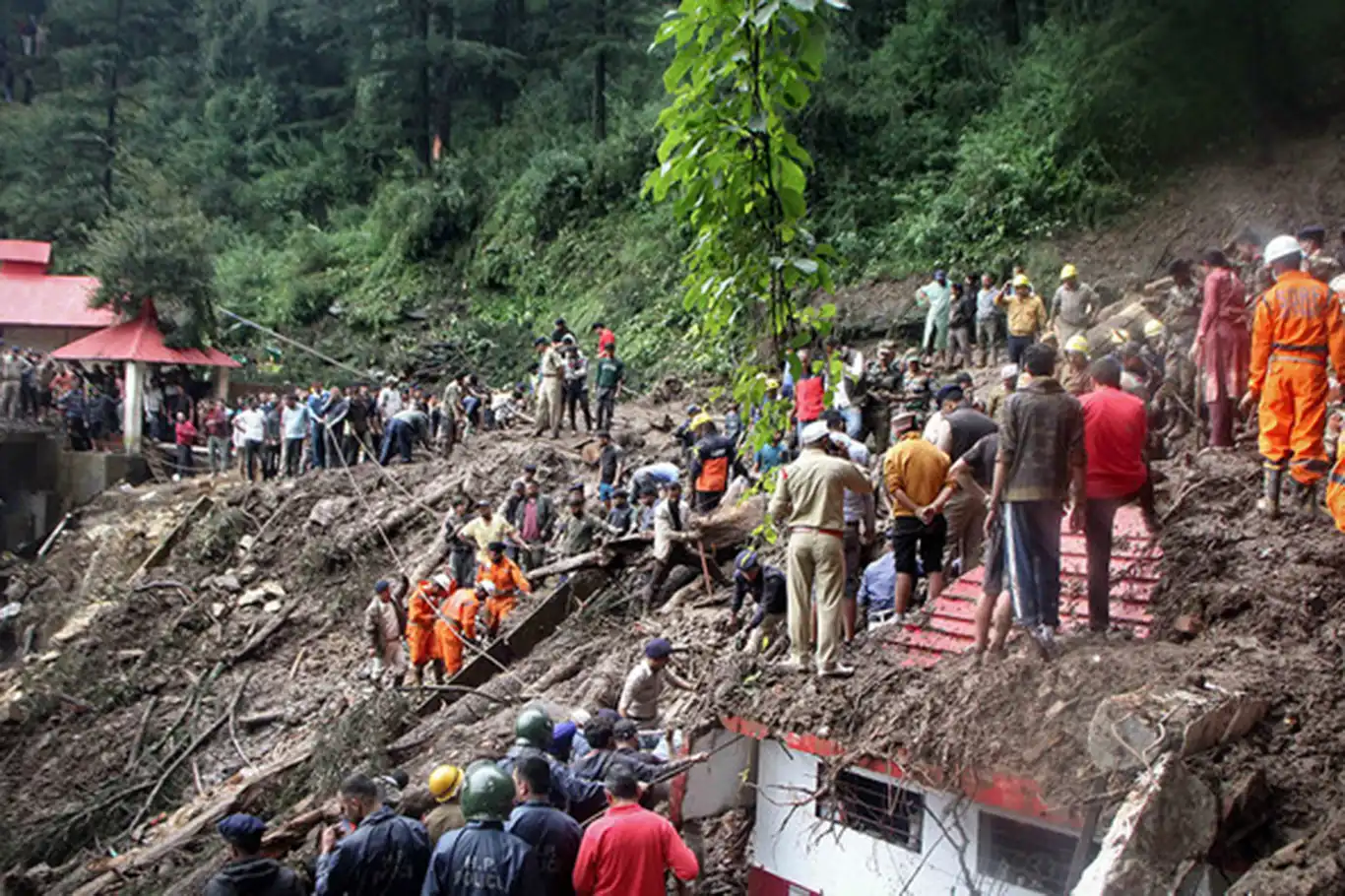South Asia drowns: Floods and landslides kill thousands in climate-driven monsoon


A devastating monsoon season has claimed at least 1,860 lives across India and Pakistan, with flash floods, landslides, and inundated cities underscoring the region's escalating vulnerability to climate-driven disasters, according to reports from local authorities and international studies.
As the monsoon continues to batter South Asia, scenes of widespread destruction have emerged, with experts warning that climate change is intensifying the frequency and severity of these extreme weather events.
In India, a sudden downpour in the hilly state of Uttarakhand this month obliterated an entire village, leaving communities grappling with immense loss. Meanwhile, a catastrophic cloudburst in Jammu and Kashmir killed approximately 60 people, further highlighting the destructive power of this year’s monsoon. Mumbai, India’s financial capital, ground to a halt this week as torrential rains transformed roads into canals, disrupting daily life and commerce. Official figures report 1,109 deaths in India since late May, with drowning and floods accounting for hundreds of fatalities and damaging 50,000 homes.
In Pakistan, the Khyber Pakhtunkhwa province alone reported 180 deaths in a single day, with flash floods and landslides devastating villages. Since June 26, Pakistan has recorded 759 deaths, with the National Disaster Management Authority (NDMA) noting that over 1,600 homes have been destroyed and more than 700 people injured, many due to collapsing structures. A recent cloudburst in Buner district killed at least 157 people, with rescue operations ongoing to locate dozens still missing under mud and debris. The NDMA has warned of more heavy rainfall in the coming days, raising fears of a rising death toll.
Climate change is significantly worsening South Asia’s monsoon, a seasonal phenomenon traditionally vital for agriculture but now increasingly deadly. Rising global temperatures are amplifying the intensity of extreme weather events, including floods, droughts, cyclones, and heatwaves.
A study by World Weather Attribution found that rainfall in Pakistan from June 24 to July 23 was 10-15% heavier due to human-caused climate change, contributing to widespread building collapses and urban flooding. “Every tenth of a degree of warming leads to heavier monsoon rainfall,” said Mariam Zachariah, lead author of the study, emphasizing the urgent need for a transition to renewable energy.
Pakistan, despite contributing less than 1% of global greenhouse gas emissions, faces disproportionate impacts from climate change. The country’s 2022 floods, which killed over 1,700 people and caused $40 billion in damages, serve as a stark reminder of its vulnerability. Experts highlight inadequate urban planning, rampant deforestation, and construction in flood-prone areas as exacerbating factors. “Half of Pakistan’s urban population lives in fragile settlements where floods collapse homes and cost lives,” said Maja Vahlberg of the Red Cross Red Crescent Climate Centre.
In India, similar challenges persist. Unregulated construction and poor sewer system maintenance have left cities like Mumbai ill-equipped to handle heavy rainfall, even when it’s not extreme. The India Meteorological Department has forecasted “heavy to very heavy” downpours in northwestern regions this week, with rainfall already 12% above normal.
As the monsoon season continues, both nations brace for further devastation. In Pakistan, former climate minister Sherry Rehman warned, “We are at the epicenter of a global climate polycrisis,” urging stronger preparedness measures. The United Nations has highlighted that global climate funds fall short of what’s needed to support vulnerable nations like Pakistan, calling for increased adaptation financing from high-emission countries.
The human toll is immense, with stories of loss echoing across the region. In northern Pakistan, businessman Saqib Hassan lost his home, 18 relatives’ homes, and their dairy farms to a July 22 flood, incurring losses of approximately 100 million rupees ($360,000). In India, entire communities remain displaced, with hundreds still missing after landslides. As the climate crisis fuels these catastrophic events, experts and activists alike are sounding the alarm for urgent action to build resilience and mitigate future disasters. (ILKHA)
LEGAL WARNING: All rights of the published news, photos and videos are reserved by İlke Haber Ajansı Basın Yayın San. Trade A.Ş. Under no circumstances can all or part of the news, photos and videos be used without a written contract or subscription.
A devastating monsoon season has claimed at least 1,860 lives across India and Pakistan, with flash floods, landslides, and inundated cities underscoring the region's escalating vulnerability to climate-driven disasters, according to reports from local authorities and international studies.
In a joint effort to confront the deepening humanitarian catastrophe in Gaza, the foreign ministers of Iran and Egypt held a telephone conversation on Wednesday, calling for an immediate halt to Israel’s genocidal campaign against the Palestinian people.
The Israeli occupation army was forced on Thursday to admit what it described as a “failure” after Palestinian resistance fighters successfully stormed a military encampment in southern Gaza’s Khan Younis, penetrating even into a building where Israeli soldiers were stationed.